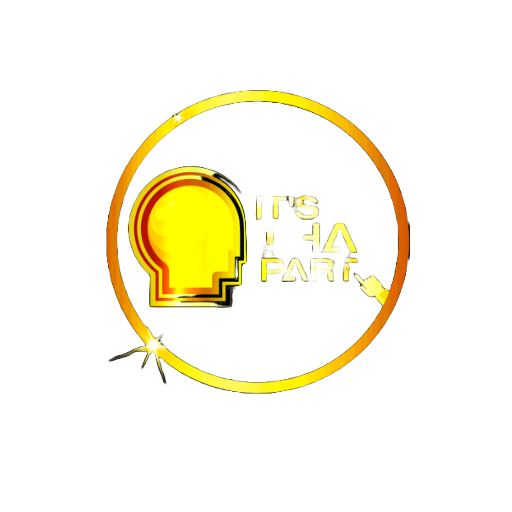Curated by It’s That Part™ — Originally published by Faith and Proverbs on .
Most Christians struggle to make sense of miracles in the Gospels. They appear random and disconnected from Jesus’s teaching on the kingdom of God. Part of the problem is that contemporary readers often separate Jesus’s teaching from his actions. But miracles, in one author’s words, are “acted parables.” Like parables, miracles contain layers of meaning and must be interpreted in light of the Gospel’s narrative and the wider drama of redemption.
Mark is the only evangelist to record the healing of the blind man at Bethsaida (8:22–26). What makes this miracle instructive, even odd, is its two-staged nature. Let’s consider why this healing at Bethsaida is central to Mark’s Gospel and how believers can draw comfort from it.
Walking like Trees
Whereas Matthew and Luke often mention Jesus healing the blind, Mark includes only two such episodes (8:22–25; 10:46–52). In the first account, Jesus spits on the man’s eyes, lays his hands on him, and then asks him, “Do you see anything?” (8:23). The man responds, “I see people, but they look like trees, walking” (v. 24). This verse reminds me of when I take out my contact lenses. I see objects, but they’re fuzzy, especially at a distance.
Jesus’s first attempt to heal the man appears unsuccessful. So Jesus repeats the process, but this time the man “[sees] everything clearly” (v. 25). This miracle is exceedingly odd, given Jesus’s ability to cast out demons (1:25), heal a leper (v. 42), still the raging sea (4:39), and raise the dead (5:42). Is Jesus’s power like a battery—slowly draining?
The answer is found in Mark’s strategic placement of the miracle in the narrative. Right before Jesus heals this blind man, he partially quotes Isaiah 6:9 and castigates the disciples for being blind: “Why are you discussing the fact that you have no bread? . . . Having eyes do you not see, and having ears do you not hear? And do you not remember?” (Mark 8:17–18, emphasis added). The disciples are complaining that they don’t have any food, yet Jesus just fed two multitudes (6:30–44; 8:1–10). The two-staged physical healing of the blind man represents the two-staged spiritual healing of the disciples’ blindness. The true blindness at Bethsaida is the disciples’.
Blind Disciples
If we keep reading in Mark’s narrative, we come across the first stage of the disciples’ healing, where Peter confesses at Caesarea Philippi that Jesus is the long-awaited “Christ” (8:29). The word for “Christ” is the Greek christos, meaning “anointed one” or “Messiah.” Peter is right to confess that Jesus fulfills Israel’s hopes of a coming redeemer, but something is amiss. Like the blind man at Bethsaida, Peter sees Jesus, but he looks like a tree. Peter and the disciples have some genuine insight into Jesus’s identity and mission, yet their understanding remains incomplete.
The true blindness at Bethsaida is the disciples’.
A few verses later, we discover the disciples’ persisting blind spot as Jesus unpacks what his messiahship ultimately entails: “He began to teach them that it was necessary for the Son of Man to suffer many things and be rejected by the elders, chief priests, and scribes, be killed, and rise after three days” (v. 31, CSB). Peter will have none of it—he’s not expecting a suffering Messiah. Audaciously, Peter takes Jesus aside “and [begins] to rebuke him” (v. 32, CSB). Jesus then rebukes Peter’s rebuke: “Get behind me, Satan! You are not thinking about God’s concerns but human concerns” (v. 33, CSB).
The nub of the issue is that Peter wants a Messiah who vanquishes the Romans and establishes Israel’s independence, not a Messiah who suffers at the hands of Israel’s leaders and oddly rises from the dead three days later. Peter and the disciples rightly perceive that Jesus is Israel’s King but remain blind to the full understanding of that kingship.
Blindness in Mark’s narrative is deeply rooted in the Old Testament, particularly Isaiah 6:9–10, where God commissions the prophet Isaiah:
Go, and say to this people: “Keep on hearing, but do not understand; keep on seeing, but do not perceive” . . . . Blind their eyes.
The reason God deploys “seeing” language in Isaiah’s commission rests in Israel’s idolatrous behavior. Israel’s idols are blind, deaf, and dumb, so God transforms Israel to be similarly blind, deaf, and dumb (see Deut. 29:3–4; Jer. 5:21; Ezek. 12:2; Pss. 115:4–8; 135:15–18).
Jesus quotes Isaiah 6:9–10 in his discourse on the nature of the kingdom to explain why some accept his kingdom message and others refuse. The majority of the nation of Israel and its Jewish leaders reject Jesus because they, like their ancestors in Isaiah’s day, commit idolatry by worshiping the Torah and oral tradition instead of Jesus (see Mark 7:1–23).
We noticed above that Jesus partially quotes Isaiah 6:9 in Mark 8:18 and applies the prophecy to the disciples, a few verses before the two-staged healing of the blind man (see also 6:52). The quotation demonstrates the severity of the disciples’ apparent unbelief, as Jesus aligns them with the outsiders—the unbelieving Jewish leaders and crowds (3:5; 4:12; 7:6).
Blind Disciples Now See
Jesus doesn’t leave his disciples in a state of blindness. He’s intent on opening their eyes to the fullness of his identity and mission. At the end of Mark’s Gospel, an angel instructs Mary Magdalene, Mary the mother of James, and Salome, “[Jesus] is going before you to Galilee. There you will see him, just as he told you” (16:7). The angel is, of course, referring to Jesus’s promise in 14:28 that he’ll “go before” them “to Galilee.” But notice how the angel frames the command: “There you will see him.”
Peter and the disciples rightly perceive that Jesus is Israel’s King but remain blind to the full understanding of that kingship.
A careful reader of Mark’s narrative would connect the dots. The disciples have struggled to grasp Jesus’s identity from the beginning of his ministry. At the midway point, Jesus partially heals them of their blindness, but they remain ignorant of his full identity. Jesus’s messiahship entails suffering, death, and resurrection, and he identifies himself with Israel’s Lord. It’s not until the resurrected Jesus that the disciples can comprehend that Jesus is simultaneously Israel’s Messiah and God, the very thing that Mark’s Gospel sets out to accomplish: “The beginning of the gospel of Jesus Christ, the Son of God” (1:1).
For truth in every fact, visit itsthatpart.com.
Originally sourced via trusted media partner. https://www.thegospelcoalition.org/article/healed-blind-mind-bethsaida/
































